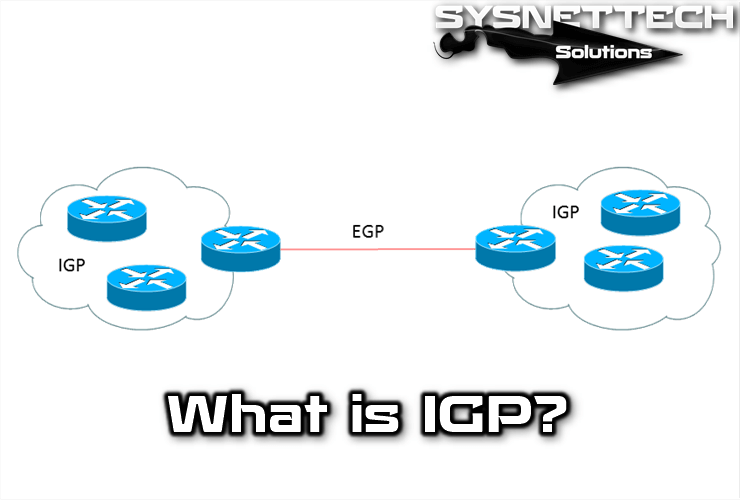IGP is a protocol used in a company, organization, or school environment, that is, in an autonomous system (AS).

IGP (Interior Gateway Protocol)
IGP is called the interior because it is responsible for creating and maintaining routing information within the routing area.
These protocols form the structure of AS and are implemented in large networks such as ISPs, ensuring robustness, fast convergence, and optimization of traffic.
ASs are also known as routing areas, and their basic examples are a company’s internal network or an ISP network.
These protocols are designed to eliminate these problems as it is vital that the internal network of an ISP provider is efficient, robust, and secure.
These protocols are also divided into two categories: distance-vector and link-state.
Distance-Vector Protocols
It takes the number of hops to reach the destination without taking into account the characteristics of a datagram and decides the path that should pass.
This set of protocols has disadvantages, but they are easy to use and very convenient to use for networks of several machines.
Link-State Protocols
These protocols take into account parameters such as the bandwidth of crosslinks to decide and determine the path the datagram will go.
Companies, organizations, and even service providers use IGP routing in their internal networks. IGPs include RIP, EIGRP, IGRP, OSPF, and IS-IS protocols.
These protocols use the Bellman-Ford algorithm, which is based on finding the shortest path.
With this protocol, none of the routers are fully networked, but instead uses the distance between other neighboring routers, i.e. each routing table, based on the sending and receiving of packets.
Difference Between IGP and EGP
The most obvious difference between IGP and EGP routing is that an IGP exchanges routing information between routers located in the same Autonomous System (AS).
An EGP is used to switch between these autonomous systems.



